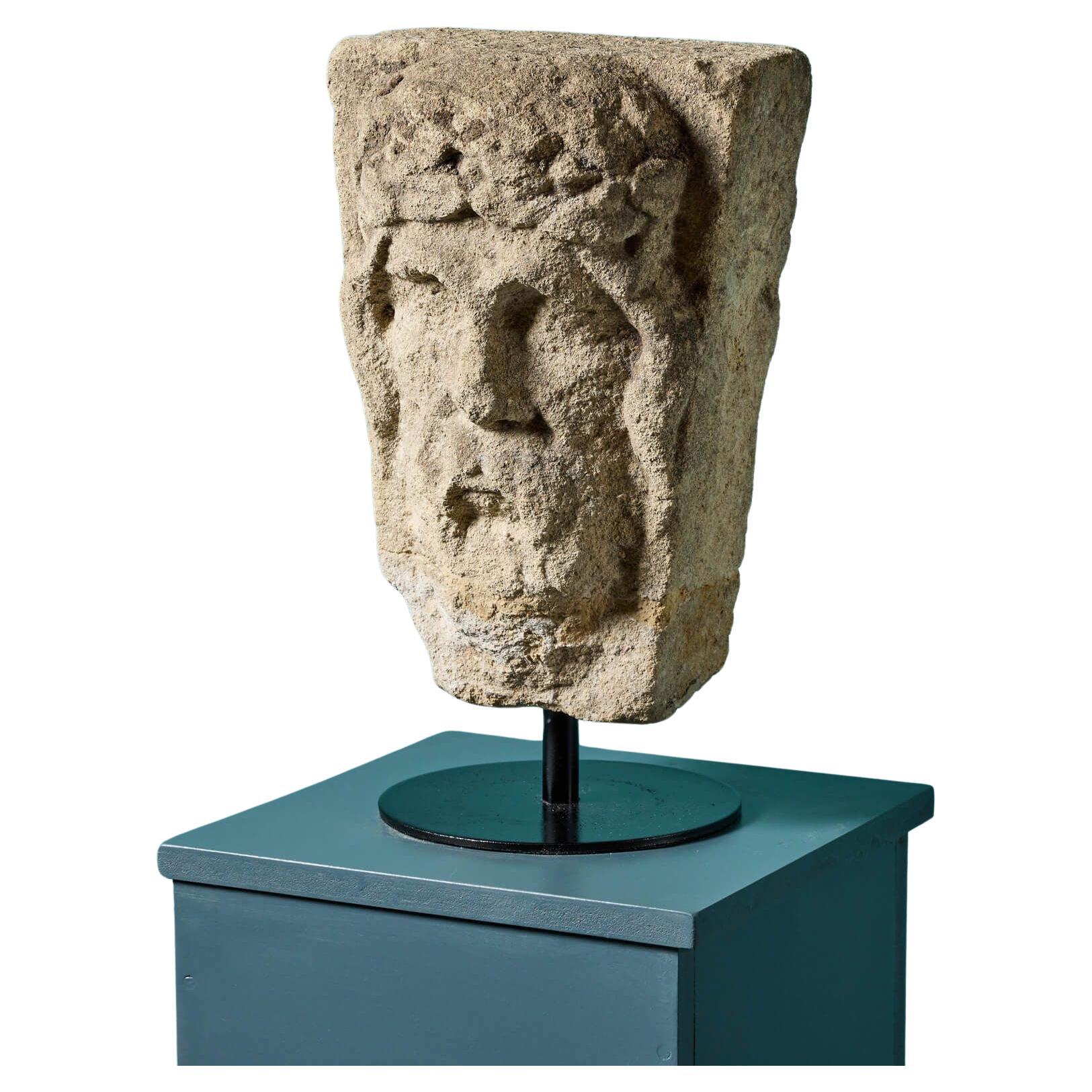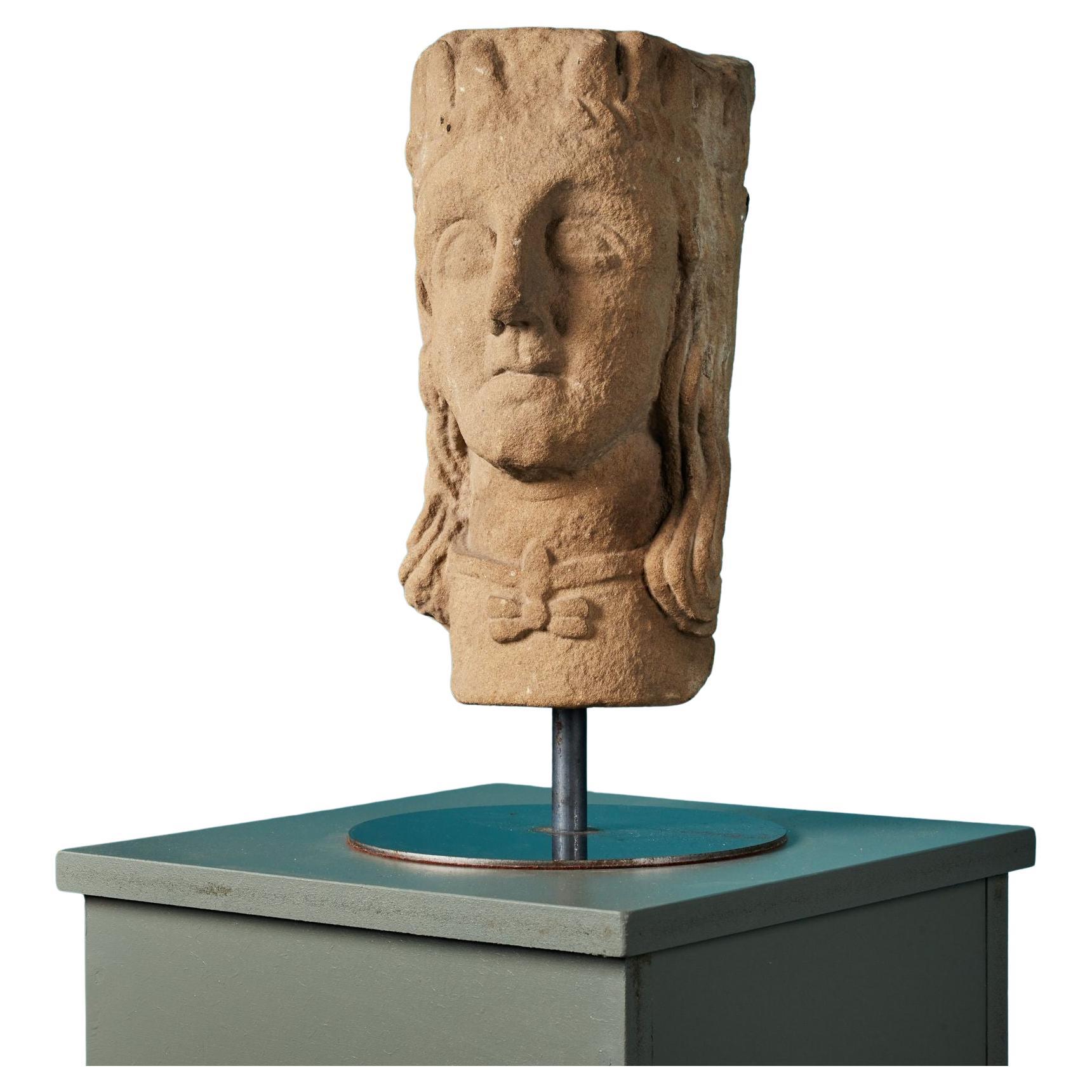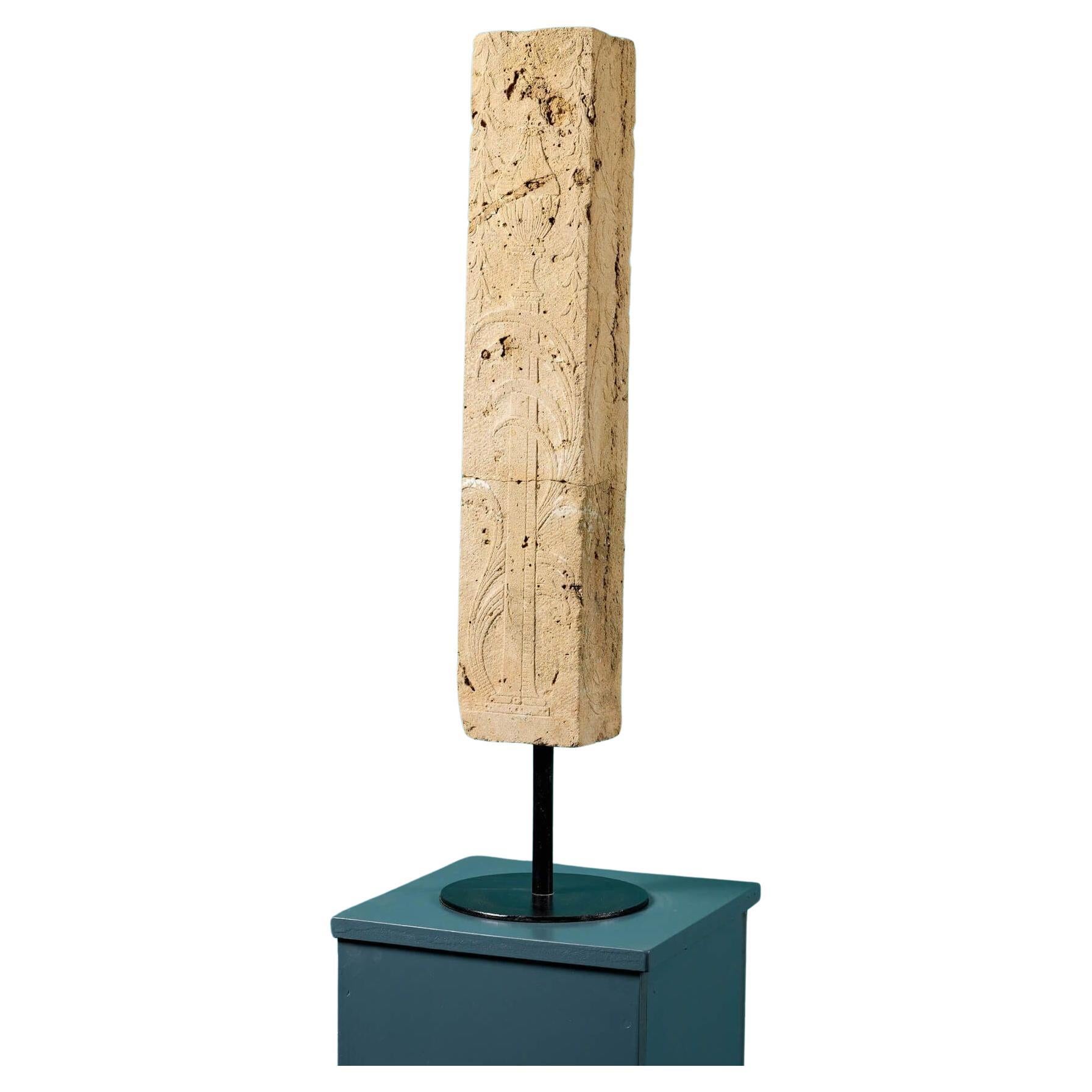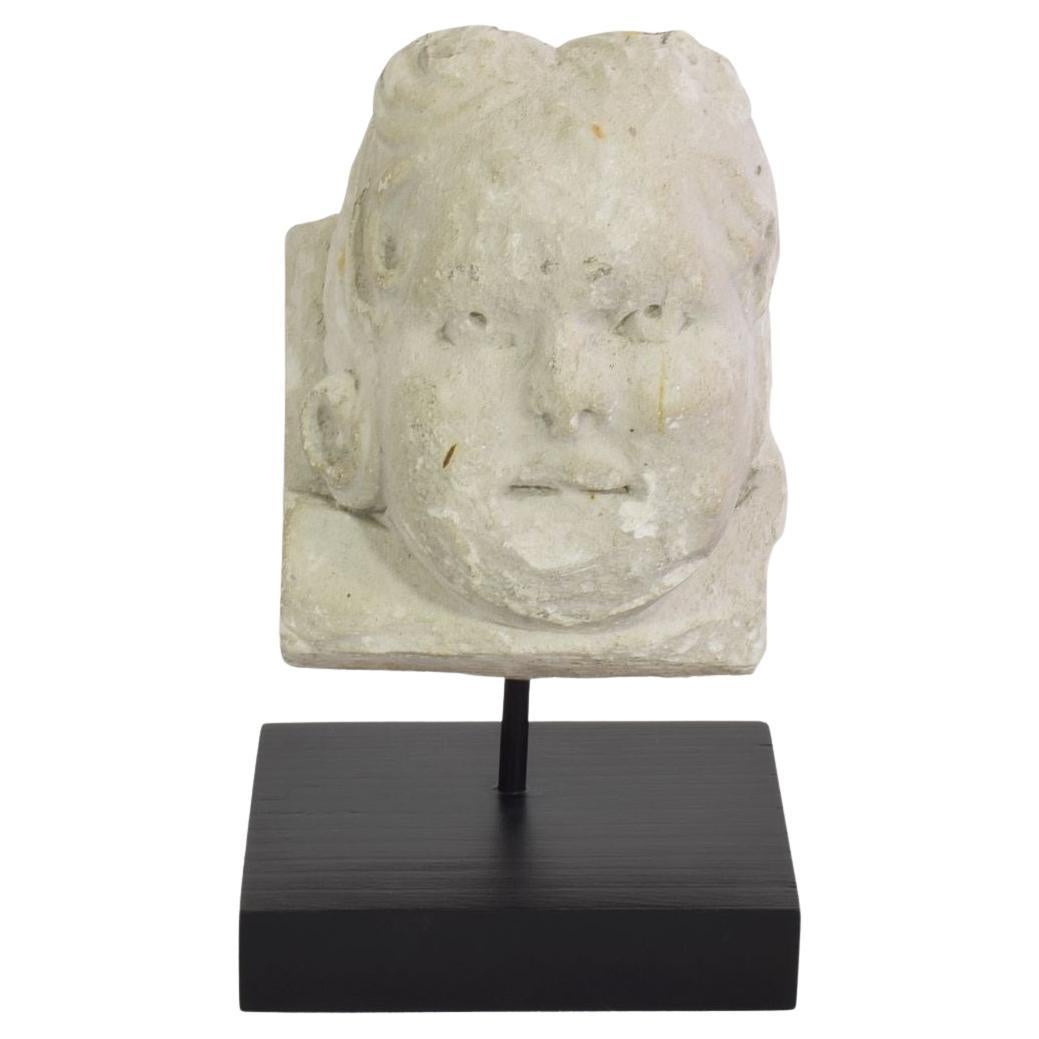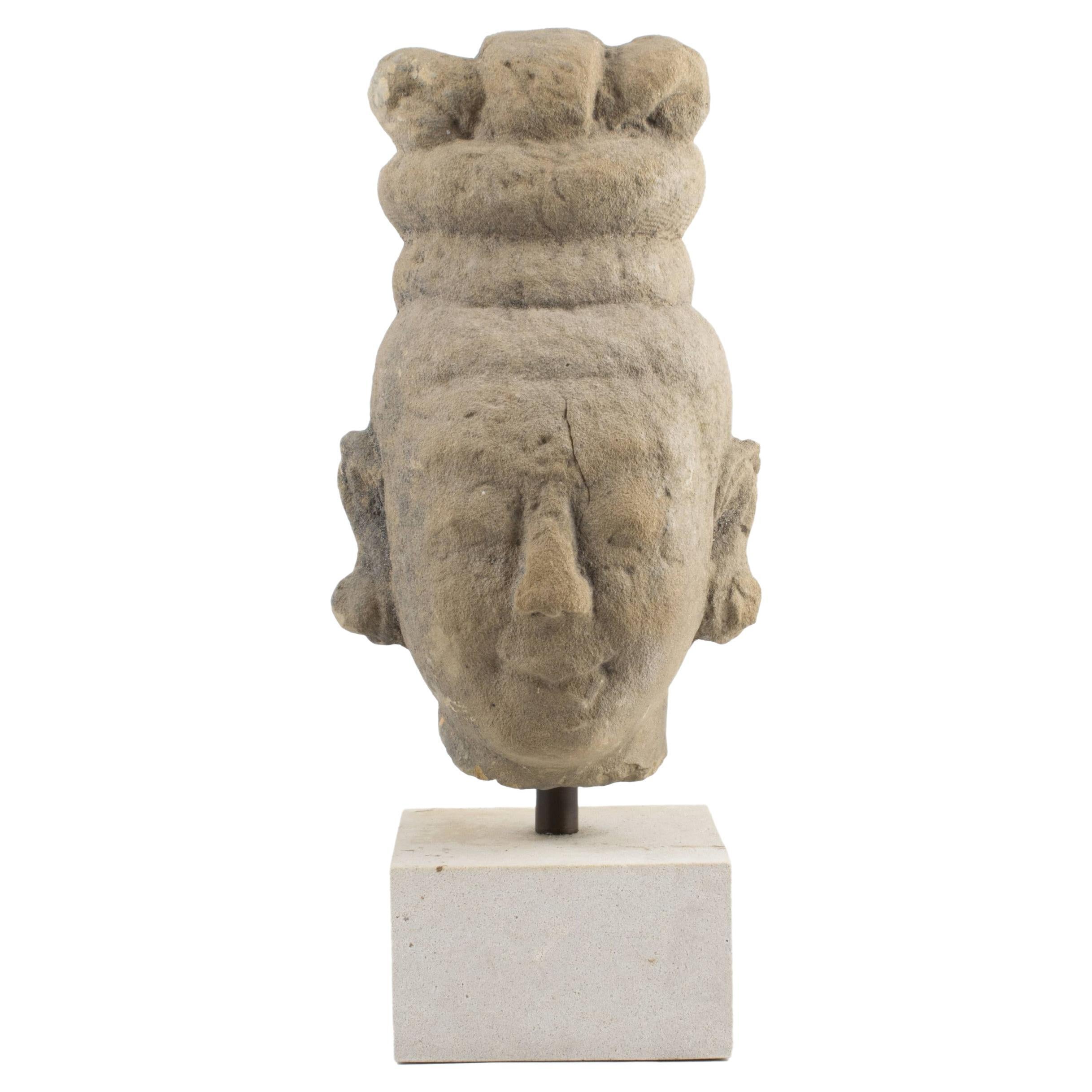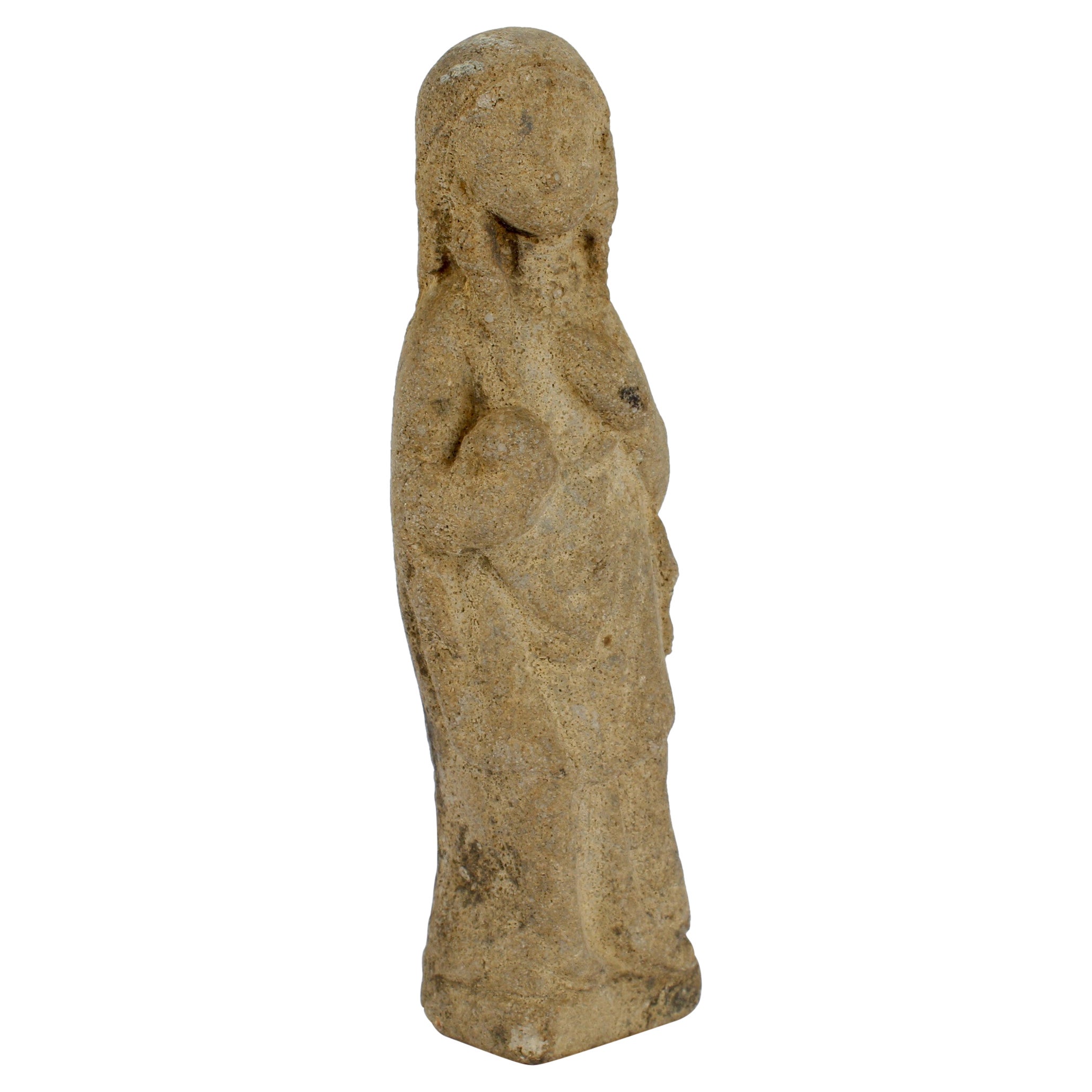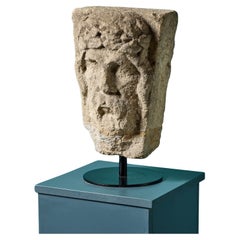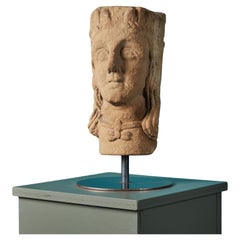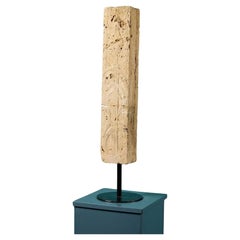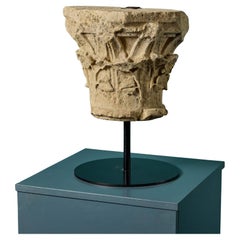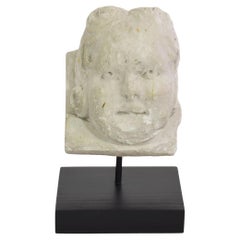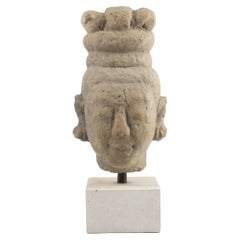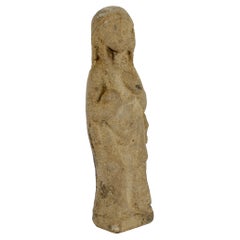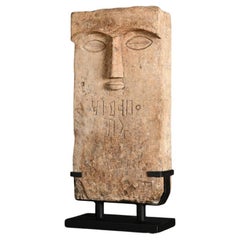Items Similar to Antique Carved Limestone Keystone of a Queen
Want more images or videos?
Request additional images or videos from the seller
1 of 5
Antique Carved Limestone Keystone of a Queen
$4,510.02
£3,375
€3,915.11
CA$6,361.60
A$6,987.94
CHF 3,651.94
MX$83,336.98
NOK 46,243.45
SEK 43,079.68
DKK 29,255.57
About the Item
An antique carved limestone keystones of a Queen, salvaged from a period building in East Anglia.
Displayed on a modern steel stand in a sleek black finish, this keystone is an impressive hand-carved sculpture showcasing desirable weathering.
The detailed elements of this keystone portray the character of the queen and a glimpse at the person the carving was originally based on.
The perfect striking new decorative feature for any period property looking to showcase a piece of English heritage.
ADDITIONAL DIMENSIONS
Height of keystone without the stand:
Height 36cm (14.17in)
Width 25cm (in)
Depth 15cm (5.91in)
Dimensions of the stand:
Diameter 17cm (6.69in)
Height 20cm (7.87in)
- Dimensions:Height: 16.93 in (43 cm)Width: 9.85 in (25 cm)Depth: 7.09 in (18 cm)
- Style:Georgian (Of the Period)
- Materials and Techniques:
- Place of Origin:
- Period:
- Date of Manufacture:1750
- Condition:Good structural condition. No visible repairs. Wear consistent with age and use. Minor Losses, scuffs, and scratches.
- Seller Location:Wormelow, GB
- Reference Number:Seller: 9340941stDibs: LU2096341095552
About the Seller
4.9
Platinum Seller
Premium sellers with a 4.7+ rating and 24-hour response times
Established in 2006
1stDibs seller since 2016
761 sales on 1stDibs
Typical response time: 5 hours
- ShippingRetrieving quote...Shipping from: Wormelow, United Kingdom
- Return Policy
More From This Seller
View AllAntique Limestone Keystone of an English King
Located in Wormelow, Herefordshire
An antique carved limestone keystones of an English king, salvaged from a period building in East Anglia.
Displayed on a modern steel stand in a sleek black finish, this keystone is...
Category
Antique Mid-18th Century English Georgian Mounted Objects
Materials
Stone, Limestone, Steel
English Medieval Stone Head Mounted onto Steel Stand
Located in Wormelow, Herefordshire
A medieval stone carving of a female head dating form the 16th century. Reclaimed from Northern England and mounted on a modern steel stand.
Additional...
Category
Antique 15th Century and Earlier English Medieval Sculptures and Carvings
Materials
Stone, Steel
Antique Neoclassical Carved Limestone Fragment
Located in Wormelow, Herefordshire
An antique Neoclassical carved limestone fragment. Dating to circa 1780, this fascinating, intrinsically worked antique, would be a brilliant display piece for a traditional home own...
Category
Antique Late 18th Century English Georgian Mounted Objects
Materials
Stone, Limestone
Rare English Romanesque Limestone Capital on Stand
Located in Wormelow, Herefordshire
This weathered English Romanesque limestone capital is centuries old, dating from the Norman era of the 11th and 12th centuries. Originating from Oxf...
Category
Antique 15th Century and Earlier English Medieval Mounted Objects
Materials
Stone, Limestone
Antique Hand-Carved Stone Sphinx Plaque
Located in Wormelow, Herefordshire
This antique stone plaque is a fragment from history. With the head of human, the body of a lion and the wings of a falcon, a mythical sphinx has...
Category
Antique Late 18th Century English Mounted Objects
Materials
Sandstone, Steel
A Coade Keystone of Minerva Dated 1794
Located in Wormelow, Herefordshire
A Coade Keystone of Minerva Dated 1794. Stamped Coade, London, and is dated 1794. Minerva is known as being the Roman goddess of wisdom. Eleanor Coade was a British businesswoman known for manufacturing Neoclassical statues, architectural decorations and garden ornaments made of Coade stone from 1769. Attached are some images of Coade Keystones taken from Alison Kellys...
Category
Antique Late 18th Century Mounted Objects
Materials
Coade Stone
You May Also Like
French, 17th / 18th Century Carved Stone Angel Head Ornament
Located in Buisson, FR
Beautiful weathered hand carved stone angel head ornament that once adorned a facade.
France, circa 1650-1750.
Weathered.
Measurement includes the wooden base.
Category
Antique 18th Century French Baroque Architectural Elements
Materials
Stone
$499 Sale Price
51% Off
400-500 Year Old Female Head In Sandstone
Located in Kastrup, DK
400-500 year old female head carved in sandstone.
Mounted on base of light sandstone.
From pagoda in Arakan, Burma.
Excavated from the ground. In the 18th century there was a large ...
Category
Antique 17th Century Burmese Other Figurative Sculptures
Materials
Sandstone
Antique Gothic Carved Limestone Model of a Madonna or Venus
Located in Philadelphia, PA
A fine antique limestone carving.
Modeled as a Madonna.
With her head slightly tilted, holding an orb in one hand, and with her other hand resting on her breast.
By repute ...
Category
Antique 15th Century and Earlier Unknown Gothic Figurative Sculptures
Materials
Limestone
Sculpture, Stone Stele Representing an Ancient Divinity, 20th Century.
Located in Saint-Ouen, FR
Sculpture, stone stele representing an ancient divinity, 20th century.
Sculpture of an ancient divinity, stone stele on a metal base, 20th century.
H: 69.5cm, W: 32cm, D: 15cm
Category
20th Century European Mid-Century Modern Figurative Sculptures
Materials
Stone, Metal
15th Century Stone Sculpture, Bust of a Wooman
Located in BARSAC, FR
Sculpture In limestone from the 15th century representing a wooman probably a saint.
The face is round and serene, the hair long and the fore...
Category
Antique 15th Century and Earlier French Medieval Statues
Materials
Stone
18th Century Carved Limestone 6ft Tall Sculpture of the Mythological Figure Pan
Located in Dublin 8, IE
18th Century Carved Limestone Sculpture of the Mythological Figure Pan.
In ancient Greek mythology, Pan is the god of the wild, protector o...
Category
Antique 18th Century Irish Georgian Garden Ornaments
Materials
Stone, Limestone
More Ways To Browse
Antique Limestone Sculpture
Stone Carved Keystone
Vintage Copper Flower Pots
Bi Disc On Stand
Chinese Tusk
Emu Egg
Eyeglass Molds
Huge Elephant Tusk
Japanese Hearth Hook
Jet Engine Fan Blade
Mexican Colonial Antiques
Mid Century Mailbox
Niels Helledie
Richters Anchor Stone Blocks
Sawtooth Fish Bill
Tibetan Headdress
Timor Leste
Antique Goat Bell
